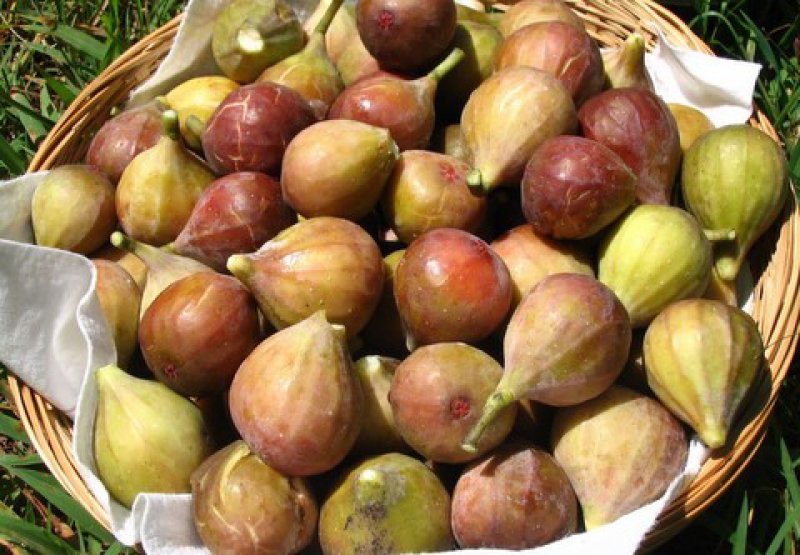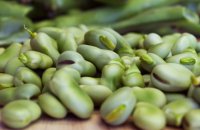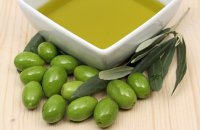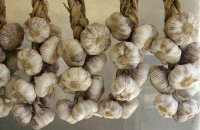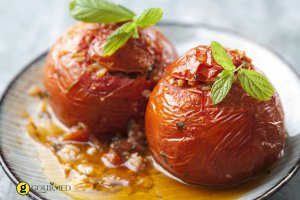The lush beauty of a bursting “siko,” the Greek word for fig, hanging heavy on the tree is one of the hallmarks of a Greek summer. But to the cold-climate denizens, figs are heaped together with every other exotic fruit, something strange and expensive, bought by the piece and savored as a rarity.
To those unfamiliar with the savoir-faire of peeling a fresh fig to get at its seed-laden, plump flesh, the fruit seems too delicate to be appealing. Figs are not for the practical minded. You can’t toss them around with impunity as you can an apple or orange. They seem so fragile and ephemeral.
Yet, despite the fruit's delicacy, the fig has been a staple of the Mediterranean diet for at least 3,000 years. It was usually dried, either in the sun or in ovens. It was so salient to local diets that it sometimes replaced bread. There were fig trees in the Hanging Gardens of Babylon.
A Long-loved Fruit
In ancient Greece, the fig was so important, not only to diet, but also to trade, that its cultivation was heavily regulated. Anyone caught exporting the fruit illegally, for example, was reported to the authorities by the "sicophants".
Aside from being such savory, nutritious fruits, figs were vital to the ancient Greeks as fodder for pork, geese, and other animals. Fig-nourished geese became foie-gras, which has been savored as a gourmet treat since ancient times. The Gauls learned from the Romans, and the Romans learned from the Greeks.
A Symbolic Fruit
The fig is as symbolic as it is nourishing. Filled with so many tiny seeds, the fruit has come to symbolize fertility and prosperity, unity, and knowledge. The tree's white sap runs thick with sexual inferences, too, reminiscent of both the masculine and the feminine, sperm and milk. It was under a fig tree that Romulus and Remo were suckled by a wolf. And it was from a fig tree that Judas was hanged, after betraying Jesus.
Many Varieties
Although Athenaeus mentions about 20 different varieties of the fruit in his "Deipnosophists," we count over 600 regional varieties today. Some are native to the world's desserts, some found only in tropical climates. Some fig trees grow like parasites, vine-like and attached to other trees, and others still run underground. Figs come in every size and shape -small, large, round, oval, black, purple, brown, red, green, yellow, and white. Some ripen in spring (one such variety is found in the Ionian Islands), others in late summer and others still in the dead of winter.
Figs on the Greek Table
In Greece, figs are savored soft and ripe when they are in season. But they grow so abundantly that by summer’s end there are more figs than most people know what to do with.
Dried
The dried figs business is currently thriving in Greece. The area around Kalamata, in the southern Peloponessos, as well as Kimi, on the island of Evia, are the two places most renowned for the production of dried figs. When dried at home, most figs are left to dry on the ceramic rooftops of old country homes. Commercially, they are more often oven-dried.
Flavored
Greeks flavor dried figs for storage with various nuts and herbs. Bay leaves are often strung together with dried figs in garland-like strands. Sesame seeds, walnuts, almonds, and oregano are among some of the other popular additions to dried figs.
Desserts and Savory Dishes
There are some very unusual desserts made with dried figs. In Chios, dried figs are baked lightly with a little mastic, to create one of the many regional versions of a dish called “sikomaitha.”
In Corfu, sikomaitha comes in the shape of a large, dense disc; the dried figs are chopped and kneaded with black pepper and ouzo, reconstructed into large patties and left to dry inside chestnut leaves. These lovely parcels are then sold at farmer’s markets in late September and October.
Figs are also used in savory dishes, usually in combination with winter meats such as pork, where they end up in a sweet wine sauce with other dried fruits.
Greeks also make fig jams and spoon sweets (this with both fresh and dried figs); fig bread; fig cookies and cakes. Modern cooks like to poach figs in wine or ouzo and serve them as a topping for mild cheeses, yoghurt, and ice cream.















































